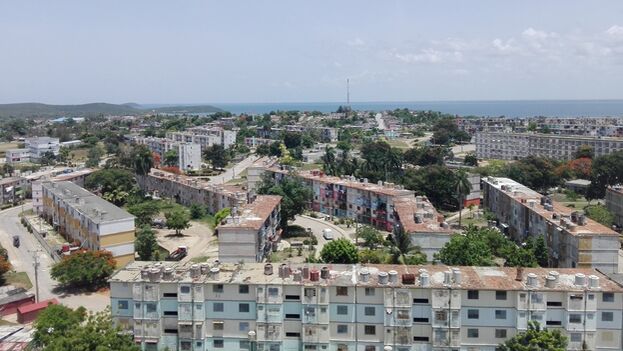
![]() 14ymedio, Yoani Sánchez, Havana, 22 August 2022 — The disproportionate repression against the protests of July 11 of last year had a very clear objective: to prevent people from again taking to the streets to demand democratic change in Cuba. The excessive prison sentences handed down by the courts also sought to send a message of terror that would paralyze any manifestation of dissent. However, the method of instilling fear did not work, and last Friday the residents of Nuevitas, in Camagüey, once again showed civic muscle by chanting “freedom” and “the people united will never be defeated.”
14ymedio, Yoani Sánchez, Havana, 22 August 2022 — The disproportionate repression against the protests of July 11 of last year had a very clear objective: to prevent people from again taking to the streets to demand democratic change in Cuba. The excessive prison sentences handed down by the courts also sought to send a message of terror that would paralyze any manifestation of dissent. However, the method of instilling fear did not work, and last Friday the residents of Nuevitas, in Camagüey, once again showed civic muscle by chanting “freedom” and “the people united will never be defeated.”
For two consecutive days, social outrage materialized in loud demands, the banging of pots and pans and defense – in the face of police violence and arrests – among residents who exercised their right to public and peaceful demonstration. What has followed is the old script of a dying regime that knows it does not enjoy the support of the people. A strong operation was deployed in that Camagüey municipality, especially in the Pastelillo neighborhood, where the most intense protests took place. There is already talk of dozens of arrests, a militarized town and the blocking of internet access.
In the midst of this stand-off between the libertarian desires of the citizens and the police tonfas, the question arises as to why the most important popular outburst after 11J — the 11 July 2021 protests — has happened precisely in Nuevitas. With its seaport, the city has the cosmopolitan influence stemming from a long interaction with sailors, and was shaped by trade between worlds, its coastline and its customs activities. In the 1960s, some guerrillas who had just come to power decided to turn it into the “industrial city” of the country, a Caribbean icon of development and modernity.
A factory making barbed wire factory, another making cement, a thermoelectric plant and a plant dedicated to the production of fertilizers were part of that dream of innovation. In those years, there were those who packed their bags in other provinces of Cuba and moved to Nuevitas, believing that if socialism was going to bear its first fruits of prosperity and bonanza somewhere, it would be in that piece of land with the smell of the sea. But the bubble burst at the end of the 1980s, when the Soviet subsidy, essential to maintaining that showcase, began to fade.
After that, everything has gone downhill for Nuevitas. Deterioration of its infrastructure, industries shut down or operating at half strength, inflation, salaries that are not even enough to cover the first week of the month, the exodus of its young people, food shortages, few recreational opportunities and power cuts. The blackouts this summer gave the final blow to a population tired of cutting back on their dreams. Those who took to the streets on August 19 were, for the most part, the children of those who were made to believe that this beautiful seaport could only experience better times, evolution and splendor.
Those who banged on their pots and shouted insults at Miguel Díaz-Canel are the ones who grew up seeing how the sugar mills in the area were dismantled little by little, observing the decline in the flow of ships in the port, the dwindling of products in the markets and the money ever scarcer in their pockets. They, who were going to be the engineers and technicians who would enjoy the abundance of Cuban communism, are now segregated for not having foreign currency and must ask their emigrant relatives to help them buy whatever they need, from a liter of vegetable oil to a fan to alleviate the heat.
It is no coincidence that it is Nuevitas that is the epicenter of social unrest. They made them believe that they would touch the technological peaks, but now they spend more than ten hours a day with blackouts, they fan their children through the night so that the mosquitoes will allow them to sleep even a little ,and they press their faces against the windows of the stores that take payment only in Freely Convertible Currency to observe everything that they cannot acquire. What was going to be the “Industrial City of the Island” is today the best reflection of the national disaster.
____________
COLLABORATE WITH OUR WORK: The 14ymedio team is committed to practicing serious journalism that reflects Cuba’s reality in all its depth. Thank you for joining us on this long journey. We invite you to continue supporting us by becoming a member of 14ymedio now. Together we can continue transforming journalism in Cuba.
